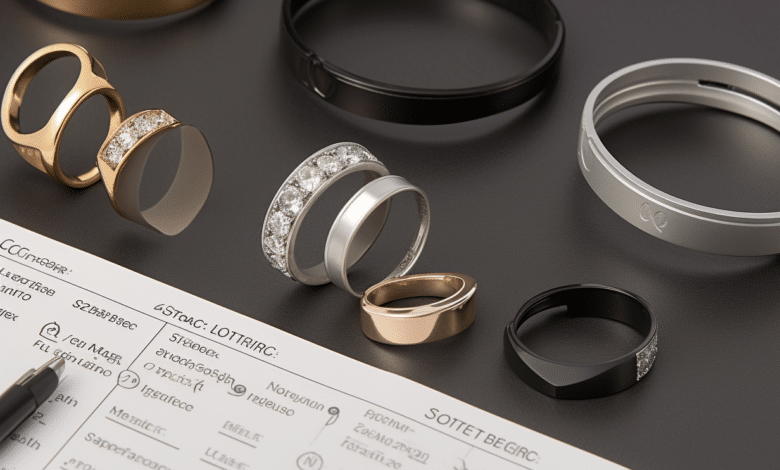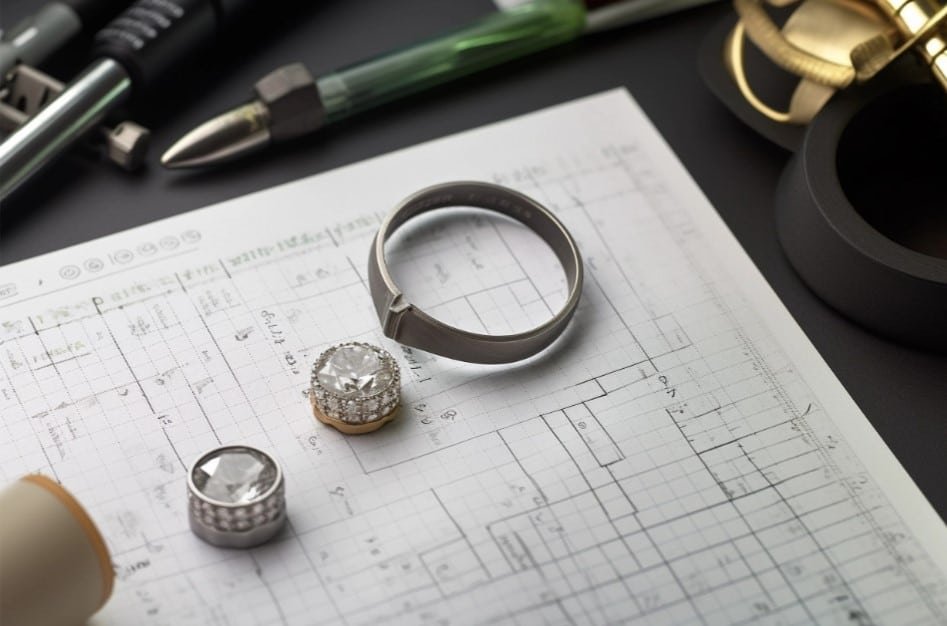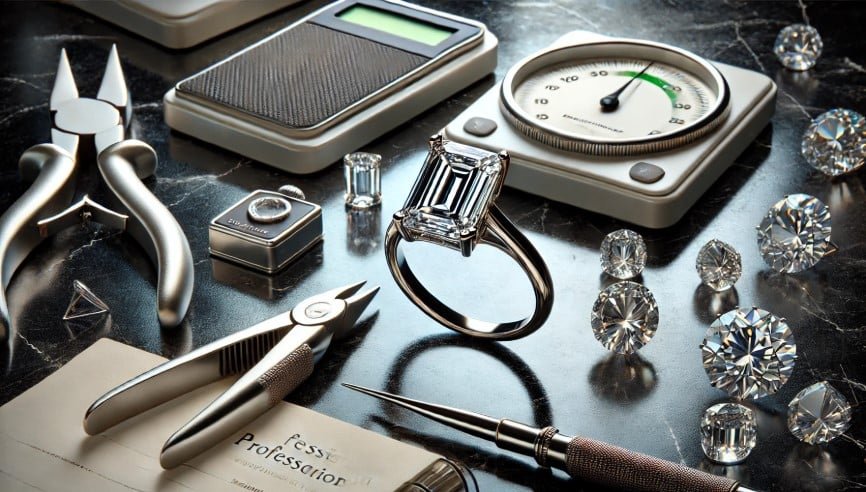7 Essential Tools for Ring Investors: Hallmark Analysis & More

Unveiling the Secrets of Ring Hallmarks: A Comprehensive Guide
In the world of fine jewelry, rings are more than just adornments; they are symbols of commitment, tokens of love, and markers of achievement. However, behind each ring’s exquisite design lies a wealth of hidden information encoded in its hallmarks. These tiny stamps and symbols hold the key to unlocking a ring’s provenance, authenticity, and value. Embarking on a journey to decipher these enigmatic markings is essential for any discerning collector, investor, or jewelry enthusiast.
1. The Art of Hallmark Analysis: Unveiling a Ring’s Origins
Hallmarks are the unique stamps or markings found on precious metal objects, including rings. These markings serve as a certification of the metal’s purity, the maker’s identity, and the year or location of manufacture. As a ring investor or collector, mastering the art of hallmark analysis is crucial for authenticating a piece’s origins and ensuring its value.
- Purity Marks: These markings indicate the metal’s fineness or purity, typically expressed in parts per thousand (e.g., 925 for sterling silver or 750 for 18K gold).
- Maker’s Marks: Also known as sponsor or company marks, these stamps identify the manufacturer or designer responsible for creating the ring.
- Assay Marks: These stamps signify that the ring has been tested and certified by an official assay office, guaranteeing its metal content.
- Date Letters: Many hallmarks include a letter or symbol that corresponds to a specific year, allowing you to pinpoint the ring’s year of manufacture.
“Hallmarks are like a fingerprint – they tell the unique story of a ring’s journey,” explains Sarah Miller, a renowned jewelry historian and author. “By decoding these markings, you can unlock a treasure trove of information about a ring’s provenance, authenticity, and value.”
2. Decoding Maker’s Marks: Tracing a Ring’s Lineage
Among the various hallmarks on a ring, the maker’s mark holds particular significance. These stamps, often intricate symbols or monograms, serve as a signature that links the piece to its creator. Deciphering these marks not only allows you to identify the manufacturer but also provides insight into the ring’s historical context and potential value.
- Well-known Brands: Iconic jewelry houses like Tiffany & Co., Cartier, and Van Cleef & Arpels have distinctive maker’s marks that are instantly recognizable to collectors and experts.
- Artisan Marks: Unique marks can sometimes be traced back to individual artisans or small workshops, adding a personal touch and potential rarity to a piece.
- Regional Styles: Certain maker’s marks may reveal the geographical origins of a ring, reflecting regional design aesthetics and cultural influences.
“Understanding maker’s marks is like unlocking a secret language,” says Alex Smith, a renowned jewelry appraiser. “Each mark tells a unique story, connecting a ring to its creator, origin, and place in history. It’s a vital tool for authenticating and valuing fine jewelry.”

3. Unveiling Hidden Symbols: Interpreting Assay and Date Marks
Assay marks and date letters, while often subtle, offer invaluable insights into a ring’s journey. These markings not only validate a piece’s authenticity but also provide clues about its age and provenance.
- Assay Office Marks: Different assay offices, such as the Birmingham Assay Office or the Goldsmiths’ Company Assay Office in London, have distinct marks that certify the metal’s purity.
- Date Letters: From the intricate alphabets used by the Goldsmiths’ Company to the symbolic marks employed by other assay offices, date letters can pinpoint the year a ring was assayed and hallmarked.
- Import Marks: Certain hallmarks, like the coveted “eagle’s head” mark, indicate that a piece was imported into a specific region, adding an international flair to its story.
“Assay and date marks are like tiny time capsules,” explains Emma Thompson, a renowned jewelry historian. They transport us back to the era when a ring was created, revealing not only its age but also the intricate web of trade routes and cultural exchanges that shaped its journey.
4. Innovative Tools for Ring Authentication
While visual inspection and expert knowledge are invaluable in hallmark analysis, the advent of modern technology has introduced innovative tools that can aid in the authentication process. From high-powered magnification to advanced imaging techniques, these tools offer unprecedented insights into a ring’s composition and markings.
- Microscopic Examination: High-magnification microscopes and loupe allow for detailed inspection of hallmarks, revealing intricate details and identifying potential alterations or counterfeits.
- Spectroscopic Analysis: Techniques like X-ray fluorescence (XRF) and energy-dispersive X-ray spectroscopy (EDS) can precisely determine a metal’s elemental composition, verifying its purity and authenticity.
- Imaging Technologies: Advanced imaging methods, such as reflectance transformation imaging (RTI) and photogrammetry, create highly detailed 3D models of a ring, capturing even the faintest hallmarks.
The combination of expert knowledge and cutting-edge technology is a game-changer,” says Michael Johnson, a renowned gemologist. By leveraging these innovative tools, we can unlock the secrets of hallmarks with unprecedented accuracy, ensuring the authenticity and value of every ring we analyze.
5. Preserving Hallmarks: Ethical Considerations
As ring investors and collectors, it is our responsibility to preserve the integrity of hallmarks for future generations. These markings are not only a testament to a piece’s history but also serve as a crucial safeguard against fraud and counterfeiting.
- Ethical Practices: Reputable jewelers and dealers should never alter, remove, or obscure existing hallmarks, as this compromises a ring’s provenance and authenticity.
- Restoration and Repair: When repairs or resizing are necessary, skilled artisans should take utmost care to preserve original hallmarks or, if unavoidable, create new ones that accurately reflect the work performed.
- Education and Awareness: By promoting knowledge and appreciation for hallmarks, we can cultivate a culture of ethical collecting and invest in practices that safeguard the integrity of these precious markings.
“Hallmarks are more than just stamps; they are a living legacy,” emphasizes Sophie Davies, a respected jewelry conservator. “By treating them with reverence and upholding ethical standards, we honor the craftsmanship and history that went into creating these magnificent pieces.”
Essential Tools for Ring Investors: Maximizing Your Jewelry Investment
Investing in rings can be a lucrative and rewarding venture, but having the right tools is crucial for success. Whether you’re a seasoned collector or just starting out, these essential tools will help you evaluate, maintain, and enhance your ring investments. From basic measurement instruments to advanced analysis equipment, each tool plays a vital role in making informed decisions and preserving the value of your collection. sku rmk ring mandrel silicone
| Tool | Purpose | Importance | Price Range |
|---|---|---|---|
| Jeweler’s Loupe | Examining gemstones and settings | High | $20 – $200 |
| Digital Calipers | Precise measurements | High | $30 – $150 |
| Diamond Tester | Authenticating diamonds | High | $100 – $500 |
| Gem Scale | Accurate weight measurement | Medium | $50 – $300 |
| UV Light | Detecting treatments and synthetics | Medium | $20 – $100 |
| Ring Sizer Set | Determining ring sizes | Medium | $10 – $50 |
| Ultrasonic Cleaner | Cleaning jewelry | Medium | $40 – $200 |
| Gem Cloth | Polishing and maintenance | Low | $5 – $20 |
| Photography Setup | Documenting collection | Medium | $100 – $500 |
| Gem Identification Book | Reference for gemstones | Medium | $30 – $100 |
| Secure Storage | Protecting investments | High | $100 – $1000+ |
| Appraisal Software | Tracking and valuing collection | High | $100 – $500 annually |
Investing in rings requires more than just a good eye for beauty; it demands the right tools to make informed decisions and maintain your collection. These essential tools will help you authenticate, evaluate, and care for your ring investments, ensuring their longevity and value appreciation. Remember, while the initial cost of some tools may seem high, they are invaluable for serious investors looking to maximize their returns in the competitive world of jewelry investment. As you grow your collection, consider gradually acquiring these tools to enhance your expertise and protect your valuable assets. ring liner strip
Unveiling the Secrets: A Timeless Journey
As you delve into the fascinating world of ring hallmark analysis, remember that each marking holds a story waiting to be uncovered. From the intricate maker’s marks that reveal a ring’s lineage to the assay and date stamps that transport us through time, these tiny symbols are portals to a rich tapestry of history, craftsmanship, and cultural heritage. sku grs ring size cutter
Embrace the journey of decoding these enigmatic markings, for it is a timeless voyage that not only enhances your appreciation for fine jewelry but also forges a deeper connection with the artisans, designers, and craftspeople who poured their souls into creating these masterpieces. With patience, expertise, and the right tools, you can unlock the secrets of ring hallmarks and embark on a journey that transcends mere adornment, revealing the profound stories woven into every exquisite piece. ring size cutter parts replacement

FAQ: Tools for Ring Investors
Question 1: What are the essential tools for analyzing hallmarks on rings?
Answer 1: The essential tools for analyzing hallmarks on rings include a jeweler’s loupe or magnifying glass, a strong light source, and a reference guide or database of hallmarks. A jeweler’s loupe, typically 10x magnification, allows you to closely examine the tiny markings on the inside of a ring. A bright, directional light helps illuminate these marks clearly. Having access to a comprehensive hallmark reference guide, either in book form or online, is crucial for identifying and interpreting the various symbols, letters, and numbers you might encounter. Some jewelers also use a digital microscope for even more detailed examination and documentation of hallmarks.
Question 2: How can I determine the metal content of a ring without professional equipment?
Answer 2: While professional equipment provides the most accurate results, there are a few methods you can use at home to get an idea of a ring’s metal content. First, check for hallmarks indicating the metal purity (e.g., 14K, 18K, 925 for silver). A magnet test can help distinguish precious metals from some imitations, as gold and silver are not magnetic. The color and weight of the ring can also provide clues – pure gold is yellow, while white gold or platinum have a silvery appearance. Be cautious with these methods, though, as they’re not foolproof. For valuable or antique pieces, it’s always best to consult a professional jeweler for an accurate assessment. size cutter parts replacement blade
Question 3: What’s the significance of different hallmark locations on rings?
Answer 3: The location of hallmarks on rings can provide valuable information about the piece’s origin and age. Traditionally, hallmarks are found on the inside of the ring band. However, the specific placement can vary depending on the country of origin and the time period. For example, many antique European rings have hallmarks on the outside of the band or on the ring’s shoulder. Some modern rings might have hallmarks laser-engraved on the inside of the band. The placement can also be influenced by the ring’s design and available space. Understanding these variations can help in dating a ring and determining its provenance, which is particularly useful for collectors and investors. cutter parts replacement blade size
Question 4: Are there any smartphone apps that can help with hallmark identification?
Answer 4: Yes, there are several smartphone apps designed to assist with hallmark identification, though their effectiveness can vary. Some popular options include “Hallmark App” and “Silver Hallmarks.” These apps typically work by allowing you to input the symbols you see or compare them to a database of known hallmarks. They can be particularly helpful for quick reference in the field. However, it’s important to note that while these apps can be useful tools, they shouldn’t be relied upon exclusively, especially for valuable or rare pieces. The complexity and historical variations in hallmarking systems mean that professional expertise is often necessary for definitive identification. sku power ring cutter replacement
Question 5: How do I differentiate between genuine antique hallmarks and modern reproductions?
Answer 5: Differentiating between genuine antique hallmarks and modern reproductions requires a combination of knowledge and careful observation. First, familiarize yourself with the hallmarking systems used in different time periods and countries. Genuine antique hallmarks often show signs of wear consistent with the age of the piece, while reproductions might appear too crisp or uniform. The style and font of the hallmarks should match the purported era of the ring. Look for subtle details like the depth of the stamp and any irregularities that might indicate hand-stamping, which was common in older pieces. It’s also crucial to consider the overall craftsmanship and style of the ring – does it match the period of the hallmarks? When in doubt, consult with an experienced antique jewelry specialist, as they can often spot nuances that aren’t obvious to the untrained eye.












